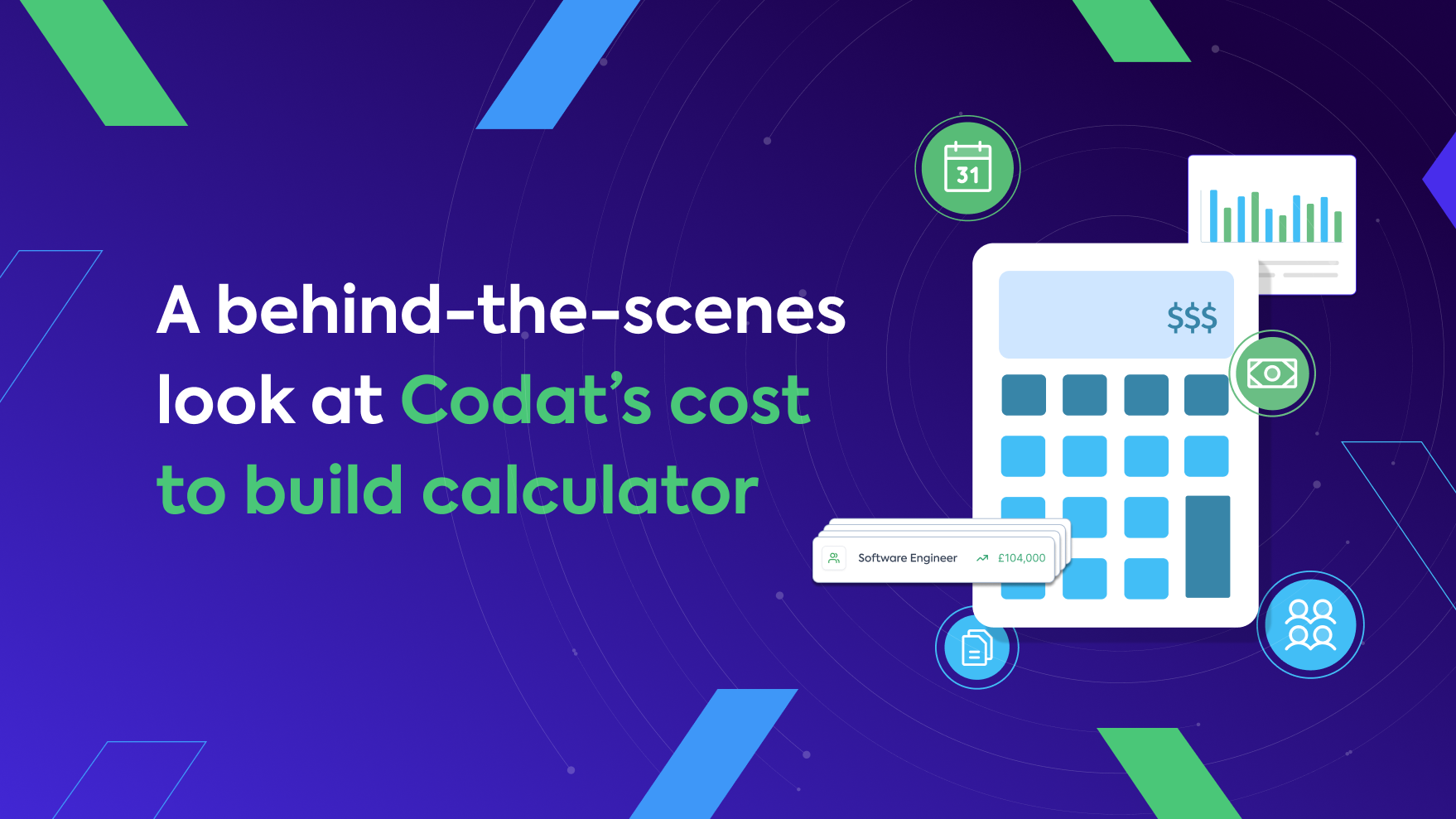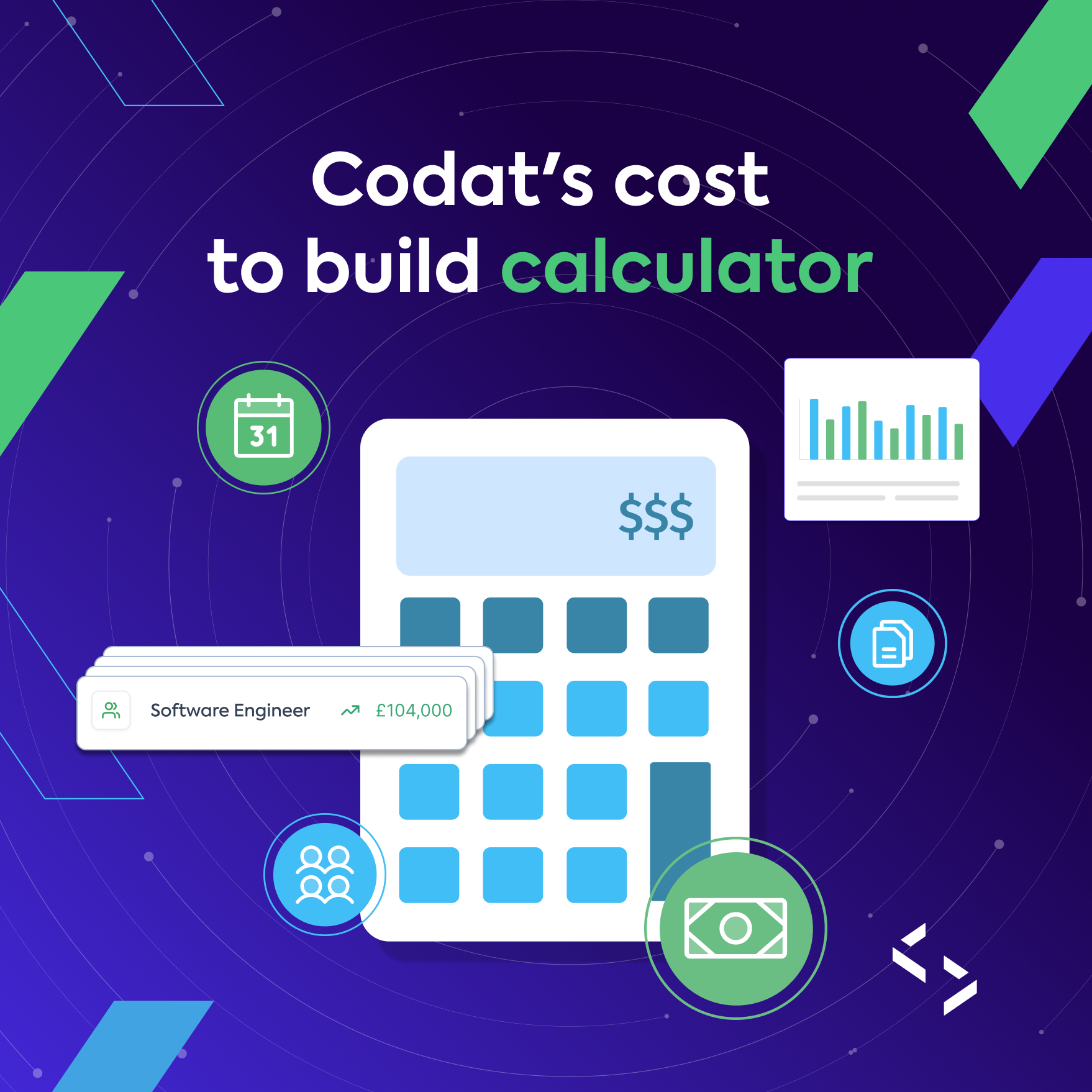
How (and why) we developed an interactive tool that helps measure the costs of building integrations in-house
On a monthly basis, we speak to plenty of fintech providers considering building connectivity to SMB financial platforms into their products. As they are evaluating how to prioritize these features, the most common question that comes up is how to estimate the time and cost involved in building integrations to accounting, banking, and commerce systems–specifically, whether it’s more cost-effective to build and maintain these connections in-house or to outsource the effort to an expert third-party provider.
In other industries, the buy-versus-build debate is resolved with a straightforward spreadsheet and some basic analysis. But when it comes to API integrations, the specialist subject matter, unexpected edge cases, and complex software and systems, tend to cause confusion. To add to this complexity further, the time and cost investment of an integration strategy can shift dramatically based on (among other criteria) the type, volume, region, use case, and systems involved, as well as the experience of the company building.
One of Codat’s company values is being useful. We’re committed not only to helping clients optimize their connectivity but also to making the steps and requirements of building integrations as transparent as possible.
That’s why we recently launched an interactive calculator that helps product teams visualize the total cost and duration of an in-house build—in other words, to identify the resources they’ll need to build and maintain the integrations their SMBs need.
If you haven’t yet experienced our new cost to build calculator, try it out here.

Below, we explain how the calculator can help you plan an effective product roadmap and offer an inside glimpse into how we put it all together.
The goal: smarter product planning
There’s a lot that product managers have to consider when preparing a product roadmap, from setting clear business objectives to carving out a precise market fit to assessing the resources at their disposal.
One important ingredient for our clients is determining how their product will sync with and pull data from the different financial systems their customers use and whether it makes sense to build the required integrations from scratch.
Based on our experience, some frequently overlooked factors can have a critical impact on the short and long-term costs of an in-house build including:
🤯 Complexity: Whether the integrations in question are relatively simple (like banking integrations and cloud-based software) or more complex (like ERP integrations and on-premise systems).
🏅 Expertise: Whether an internal team has the expertise in the relevant financial concepts— especially in specialized fields like accounting—or outside consultants are needed.
🪜 Scalability: How many integrations will be needed over time, as a company’s target market expands and it requires broader coverage.
🛠️ Maintenance: The time and energy that will need to be devoted to ongoing upkeep, like making regular integration updates and addressing emerging errors and edge cases.
⚠️ Risk: The potential costs of failing to meet mandated data security and compliance standards or customer expectations, resulting in instances of fraud, legal damages, and customer churn.
Upfront answers to these questions can help a product manager make the best decision for their business and get buy-in from key stakeholders—and that’s what our cost to build calculator set out to provide.

The solution: a comprehensive cost analysis
Earlier this year, Codat held an all-out, two-day whiteboarding session and hackathon, pulling every department from finance to marketing to engineering together in our London office. The aim was to pinpoint and solve specific challenges our clients face as they work to meet their business goals.
From that workshop came the idea for a hands-on cost to build calculator that accounts for every possible expense and variable—so our clients don’t have to.
We wanted real numbers behind our calculator, rather than estimates, so we based figures on our clients’ actual experiences, implementation metrics, and developer change logs, as well as verifiable salary insights from the Radford Global Compensation Database.
We considered not only different industries and use cases, but also differences by region and the relative costs of an initial build compared to those associated with subsequent integrations and ongoing maintenance. Finally, we laid out all of our logic in an explanatory guide that accompanies each and every calculation.
The result is a tool that ensures fintechs have all the information they need to implement an integration strategy at scale—and that they’re aware of any potential costs or complications that would make a third-party provider a more sensible choice.
The bottom line
Product managers and other fintech leaders need reliable tools they can turn to when laying out their roadmaps and deciding whether to build or buy the integrations that power their products. By drawing from first-hand experience and analyzing exhaustive industry data, our cost to build calculator gives them a quick, clear answer.
Ultimately, it helps you understand whether connectivity will be a simple win—or whether you’re better off with a provider like Codat that offers a range of off-the-shelf integrations at a fraction of the cost.
Learn more about the costs of an in-house integration strategy
If you have questions about how we built our cost to build calculator or how it can help you build smarter, stronger product roadmaps, reach out to a member of our team for in-depth answers.
You can also sign up for a free account to explore our platform, test out our solutions, and discover what turnkey accounting, banking, and commerce integrations and real-time financial data can do for your business.

Amy Roberts, Product Manager